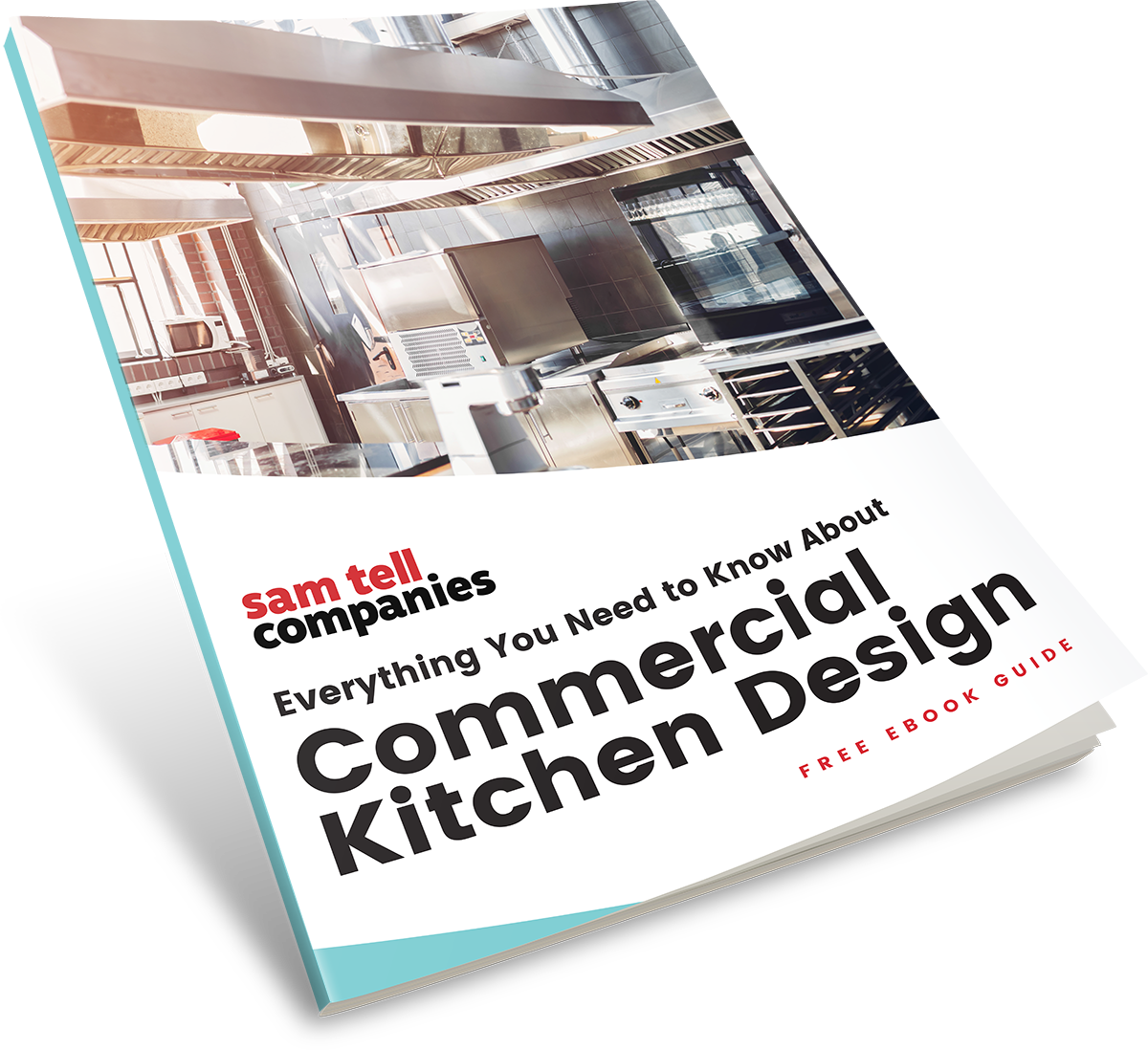Whether you’re building out a brand new restaurant kitchen or looking to remodel and upgrade, it’s crucial to consider all of your options when it comes to the heavy duty equipment that makes up the foundation of your business.
One of the main considerations when configuring a new kitchen is whether to go with classic gas burners or new fangled induction cooktops. While gas cooking is the standard, “old reliable” method of food preparation, induction has grown in popularity and gained traction in the mainstream restaurant industry.
But is one method of cooking better than the other? Also, what factors make your kitchen a good candidate for an induction cooktop? We’ve enlisted Jerry Kouveras, Vice President of Design & Engineering at The Sam Tell Companies, to help our customers sort through the Induction Cooktop vs. Gas Burner debate.
How do I know if an induction cooktop is right for my restaurant?
First, I think it is important to start off with the fact that induction burners do not exempt a kitchen from needing a Type 1 exhaust hood with a fire suppression system like an Ansul or other brand equivalent. The fact that an induction burner can perform in the same manner as an open gas-burner means that you can sauté, fry, or braise with induction so it needs to comply with your same local codes applicable for any grease emitting or producing piece of commercial equipment. That being said, if you are trying to get a ventless exhaust system approved for use in your facility, you would have to use either induction or electric ranges as gas ranges or any gas appliance cannot be used with a ventless system as their pilots need to be vented to the outside. So assuming you are going to have a Type 1 exhaust hood and fire suppression, the option of using induction or gas is dictated next by whether you even have the power to handle an induction range versus a gas range.
Typically in the U.S., natural gas and liquid propane have been the main source of power for commercial kitchen equipment, so most buildings—whether a new construction or an existing renovation—are not set up for the high electric loads that induction ranges or electric ranges require.
A typical induction (6) hob or (4) hob range with standard oven base will draw between 21KW and 27KW and that means a maximum amp draw depending on service of 66 to 82 amps, which means a requirement of an 80 or 100 amp circuit breaker per range. If your building is only providing you 400 or 600 amps for your entire commercial space, you can see how fast you’ll run out of power using induction ranges—and this doesn’t include your warewasher(s), HVAC or other electrical needs for your restaurant space. The consideration of available power is a key factor in determining whether or not you can even consider induction ranges, even if you were planning on having a Type 1 exhaust.
If I have plenty of electrical power and a Type 1 exhaust system with fire suppression, should I use induction or gas?
All things considered, electric equipment is always more precise and energy efficient than gas-fired equipment. With induction, the argument is only stronger as induction hobs use electromagnetism to deliver heat—the created magnetic field in an induction hob is almost instantaneous—while an electric coil burner relies on electric energy gradually heating up an electric radiant, which takes time.
In addition to the induction hob delivering heat almost immediately, it delivers the heat far more efficiently. A typical induction hob delivers its heat to the pan at about 85 percent efficiency, meaning little heat energy gets lost to the environment around the induction hob heat source under the pan. An electric radiant delivers heat at about 70 percent efficiency to a pan and a gas-burner delivers its heat energy to a pan with about 38 percent efficiency. As you can see, most gas ranges in the U.S. release far more heat into the air around the range than to the actual sauté pan—is it any wonder why chefs on the line complain about heat so much?
Induction sounds great, but how should cost factor into my decision?
While it might seem like a no-brainer to go with induction ranges and equipment over gas-fired equipment, one does have to consider cost. An induction range with oven base will easily cost you more than $10,000, while you can get a good restaurant series six-burner range with an oven base in the $3,000 range—or even lower, if you are willing to go with some of the lower BTU strength models. One can see how cost could play a factor in this induction versus gas decision when taken into consideration with all the other equipment expenses in the kitchen and at the bar.
Are there specific scenarios where induction is most beneficial?
Given the advantages noted above for induction over gas, yet also considering some of the negative factors (large circuit breaker requirements and equipment cost), it might make sense to use induction only in one specific station where a higher degree of cooking precision is required. Induction would also be ideal if you’re trying to maintain a standard of production with less training given that unlike a gas burner, one can set an induction hob at 475-degrees Fahrenheit or 350-degrees Fahrenheit or even 250-degrees Fahrenheit depending on what one is preparing and it will stay at that temp with a 2 to 3 percent max variance—try doing that with a gas burner!
This is why we see plenty of requests for induction hobs in pastry departments, as precision temp control is essential when working with chocolate, sweet sauces, or preparations with a high sugar content. What’s more, induction guards against the discharge of residual heat into the pastry department. It’s typical that a pastry chef might only need two or three countertop induction hobs, depending on the size of their program, for all their prep needs. As such, a facility only needs to procure a few countertop induction hobs at far more reasonable price points than an induction range, while electrically we are looking at amp draws of between 12 to 17 amps at 208V Single Phase—it’s far easier to squeeze in those circuits into the overall kitchen load.
Takeaway
As we can see, the question of “induction cooktop or gas burner” depends greatly on a few restaurant-specific factors. The best way to find out what is right for you is to talk to the experts. Sam Tell is ready to serve up answers to any of your questions. Contact us today to learn more!








